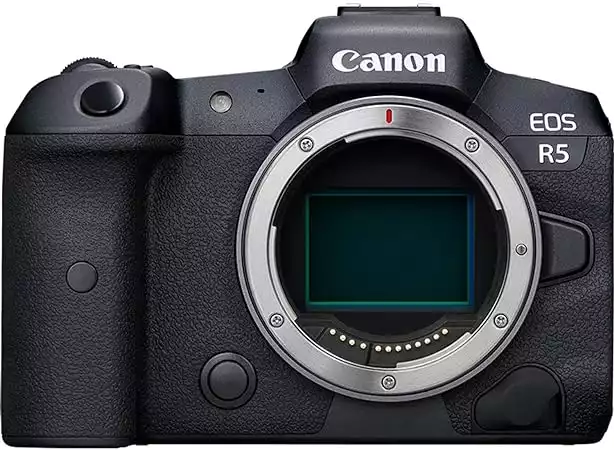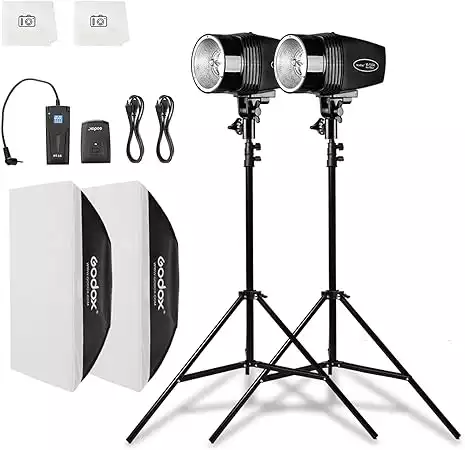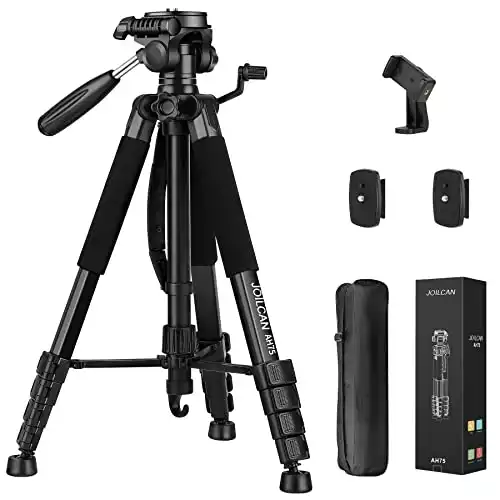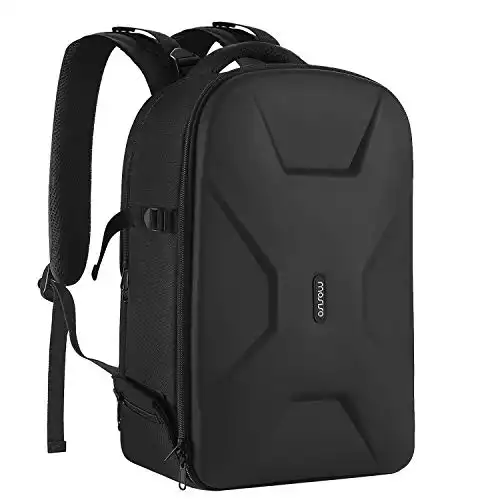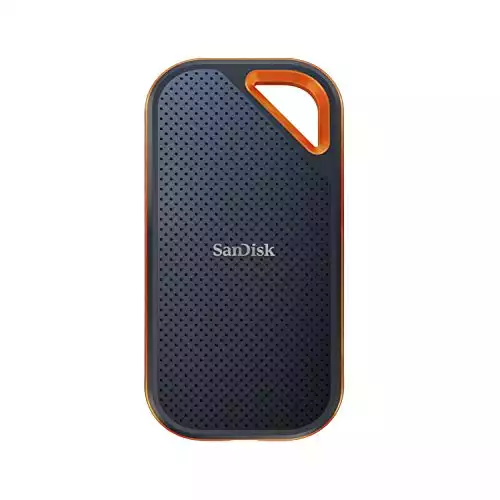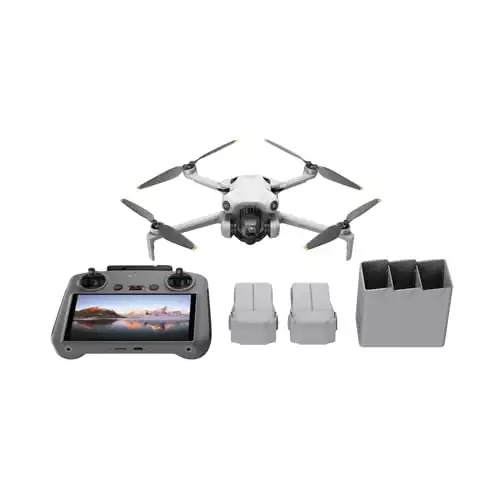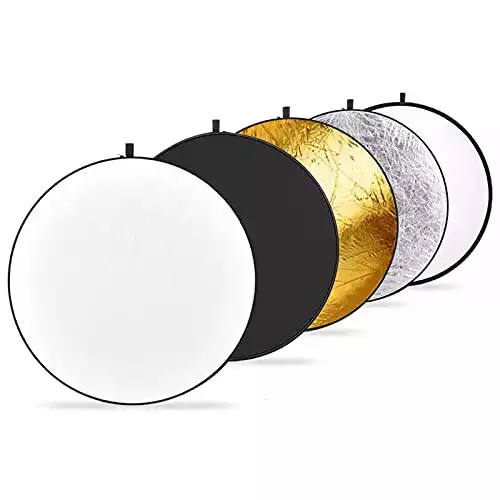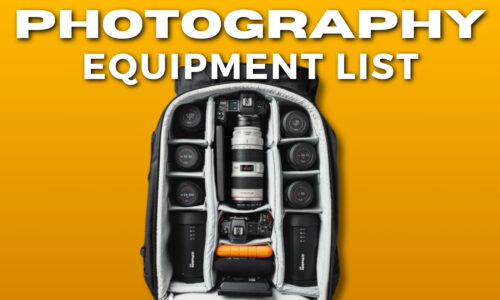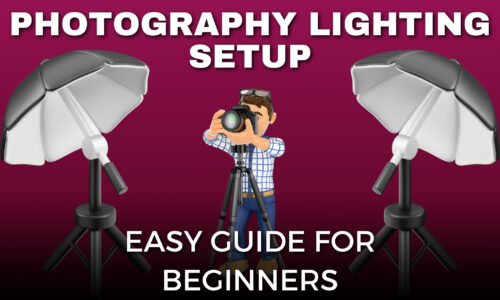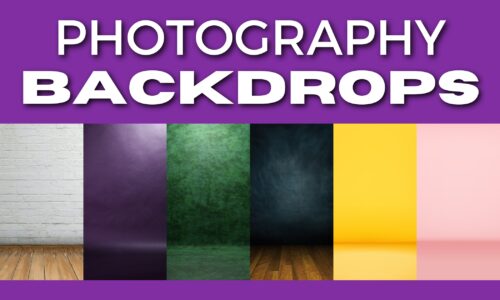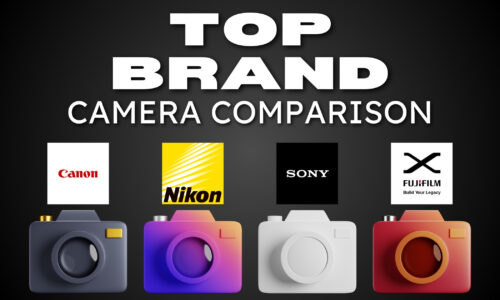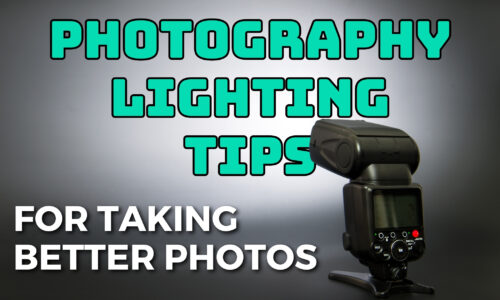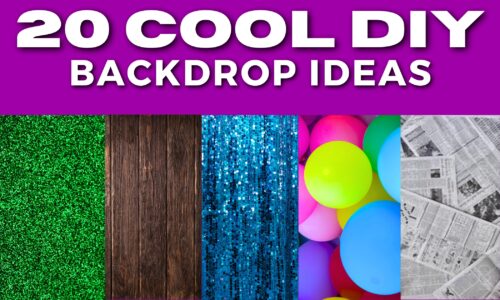The Complete Guide to Photography Equipment
You need some photography equipment if you’re starting your photography journey.
But as a beginner, sorting through the countless options available on the market is overwhelming.
And maybe you’ve even asked yourself:
“What kind of photography gear do I need?”
Well… the answer isn’t always straightforward because it depends on your goals as a photographer. Are you aiming for portrait shots or food photography?
Or are you more interested in taking pictures of real estate, landscapes, or classic cars?
Each type requires specific tools to enhance your work and bring out the best in each shot. So, if you do not know where to start, no worries. In this guide, I’ll walk you through choosing the right equipment depending on your needs.
And as you progress and expand as a photographer, you’ll adjust and add to your collection.
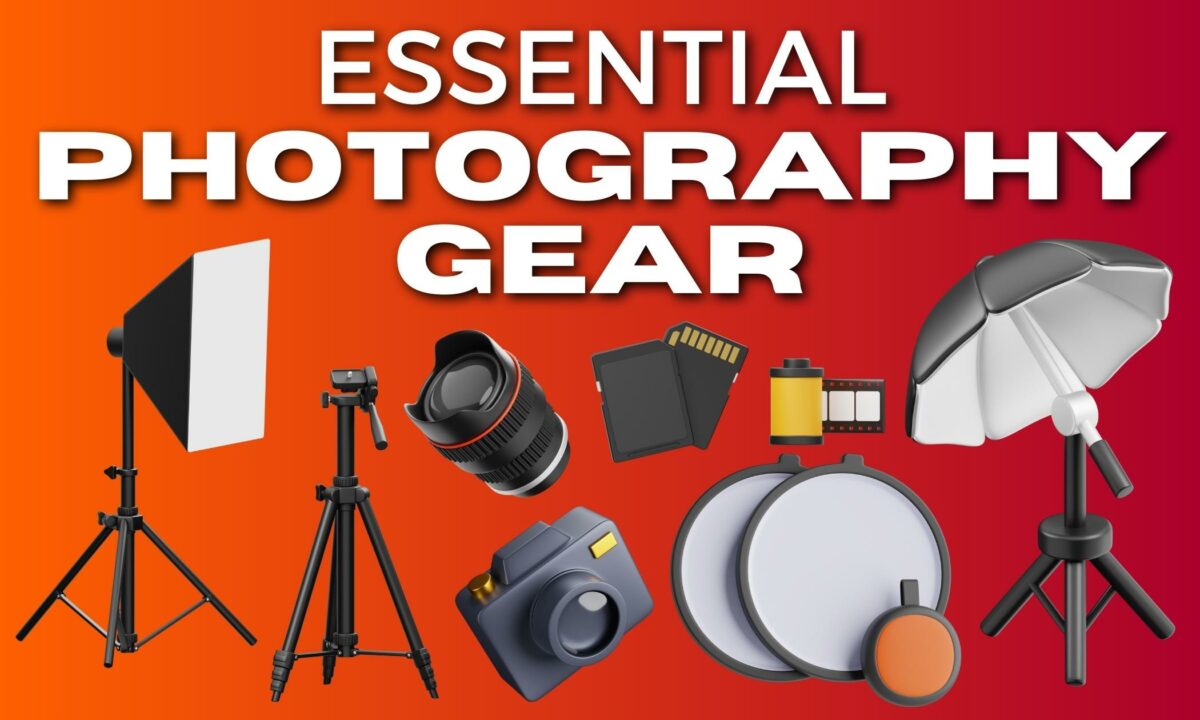
Key Takeaways from This Article
Begin your photography journey by familiarizing yourself with the necessary equipment and accessories
Choose gear suitable for your personal preferences and the type of photography you want to pursue
Constantly evaluate your equipment as you grow and improve your photography skills
What is Photography Equipment?
Photography Equipment = The tools a photographer uses to capture and create images.
This involves must-have items like cameras and lenses.
It also includes photography accessories like tripods, filters, lighting equipment, camera cleaning supplies, lens cleaners, and screen cleaning kits.
Professional Photography Equipment Must-Have’s
Ultimately, your choice of photography equipment should align with your goals and budget.
But if you can afford it, don’t be afraid to invest where it counts—because quality gear is an investment in your talent, passion, and yourself.
Cameras
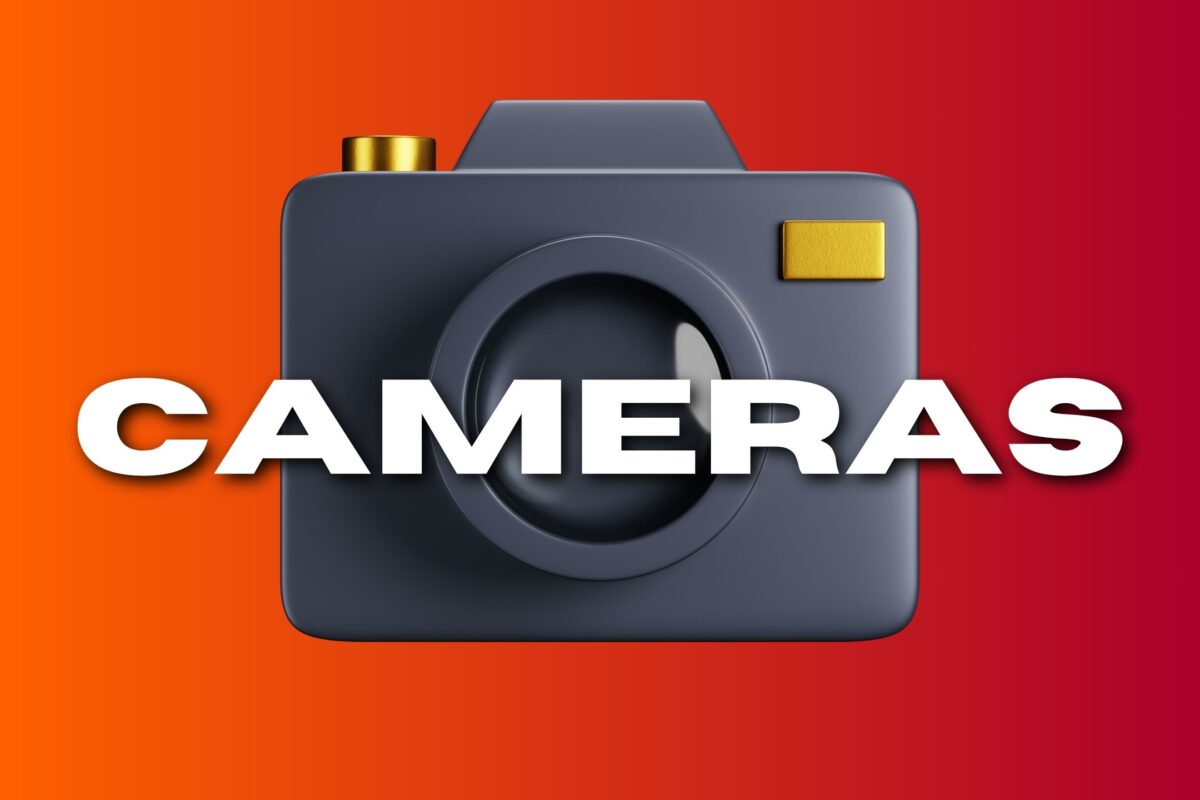
As a photographer, your most essential tool is your camera.
Many options are available, so choose the one that best suits your needs.
Some popular camera brands include Canon, Nikon, Sony, Fuji, Olympus, and Panasonic. These companies offer DSLR and mirrorless camera systems for various skill levels, from beginner to professional photographers.
For instance, the Canon EOS R5 is a pro-level camera with a 45-megapixel camera with remarkable video specs.
The camera we use the most. It has advanced features like a high-resolution 45-megapixel sensor and 8K video capabilities—a game-changer for those in need of a professional camera.
Lenses
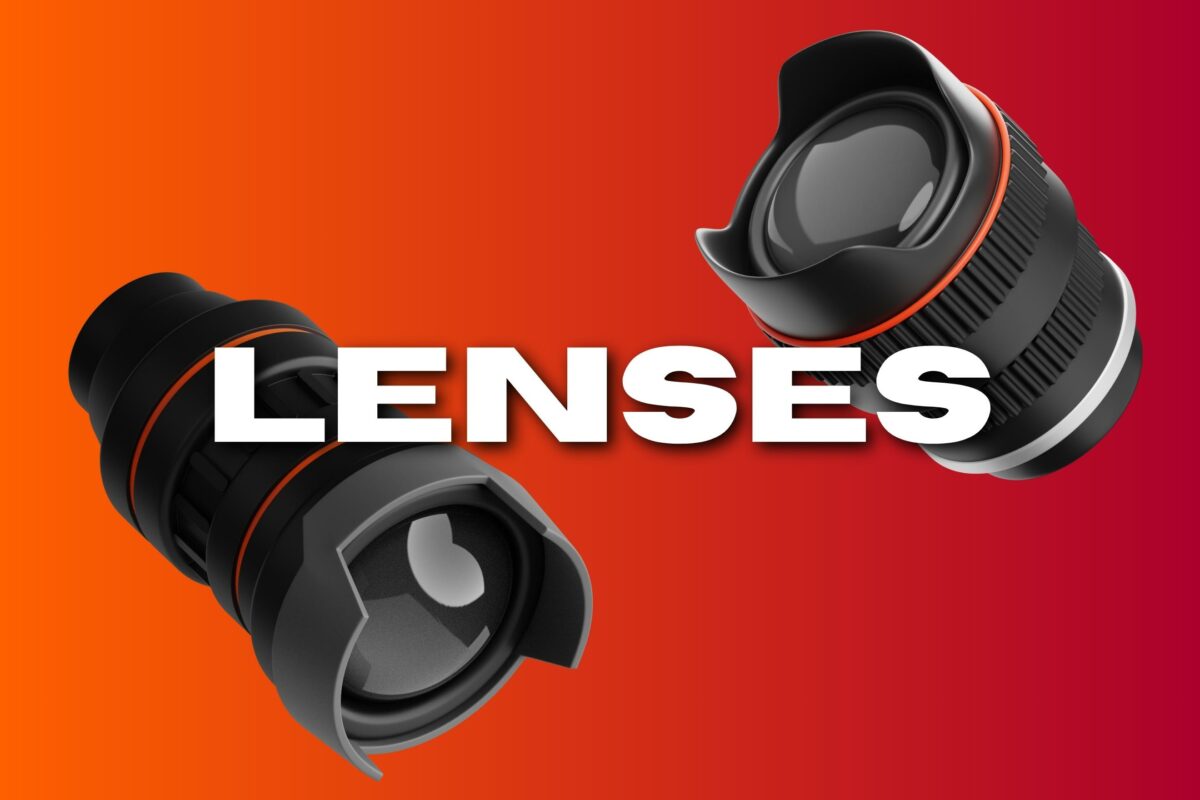
Besides a high-quality camera, lenses are critical for capturing stunning photos.
There are various types of lenses for different photography styles, such as:
Prime Lens: Fixed focal length, usually with a larger aperture for low-light conditions and better picture quality.
Zoom Lens: Variable focal lengths, offering versatility in various shooting situations.
Macro Lens: Designed for close-up photography, producing images with incredible detail.
Telephoto Lens: Ideal for sports or wildlife photography, capturing distant subjects with ease.
Purchase a lens that caters to your photography niche and complements your camera gear.
Accessories
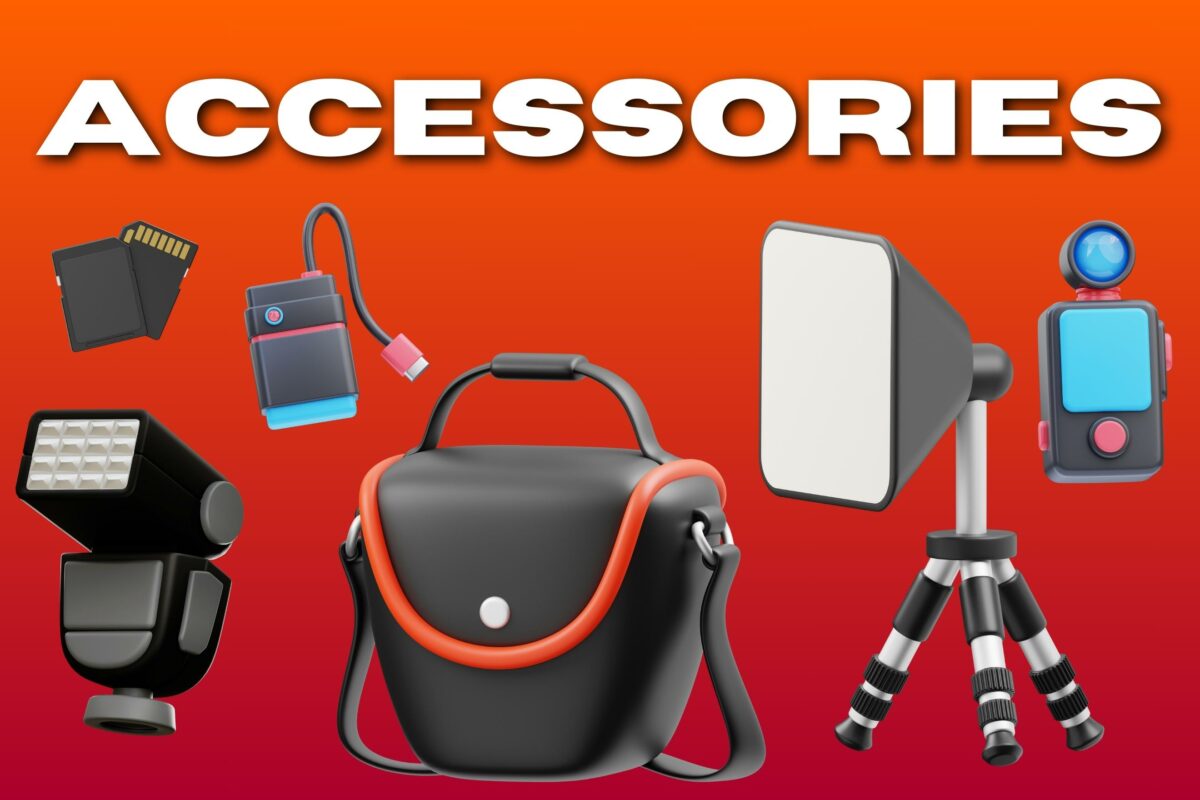
Photography requires additional accessories to enhance image quality and streamline your workflow.
Some essential accessories include:
Tripods: A sturdy tripod like the Gitzo GT2545T Series 2 Traveler Carbon Fiber Tripod is an excellent choice for stability and perfect framing.
Flashes: External flashes offer better lighting control and can be used off-camera for creative effects.
Filters: Can enhance colors, reduce glare, and protect your lens from scratches and dirt.
Camera Bags: A well-organized camera bag protects your gear during transport.
Lens Wipes and Microfiber Cloths: Prolong your equipment’s lifespan and prevent malfunctions.
Memory Cards: High-capacity, fast memory cards ensure smooth capture and storage of images.
Batteries: Spare batteries will keep your camera running during long photo sessions.
Remote Shutter Release: You can shoot remotely, reducing camera shake and enabling long exposure shots.
Lighting Equipment: Studio lights, reflectors, softboxes, filters, and a good light kit help control lighting for professional results.
This kit is designed for beginners and offers straightforward setup and use, along with powerful, adjustable lighting.
Investing in quality cameras, lenses, accessories, flash, and gear can greatly upgrade the photos you take.
Choosing The Right Camera Body
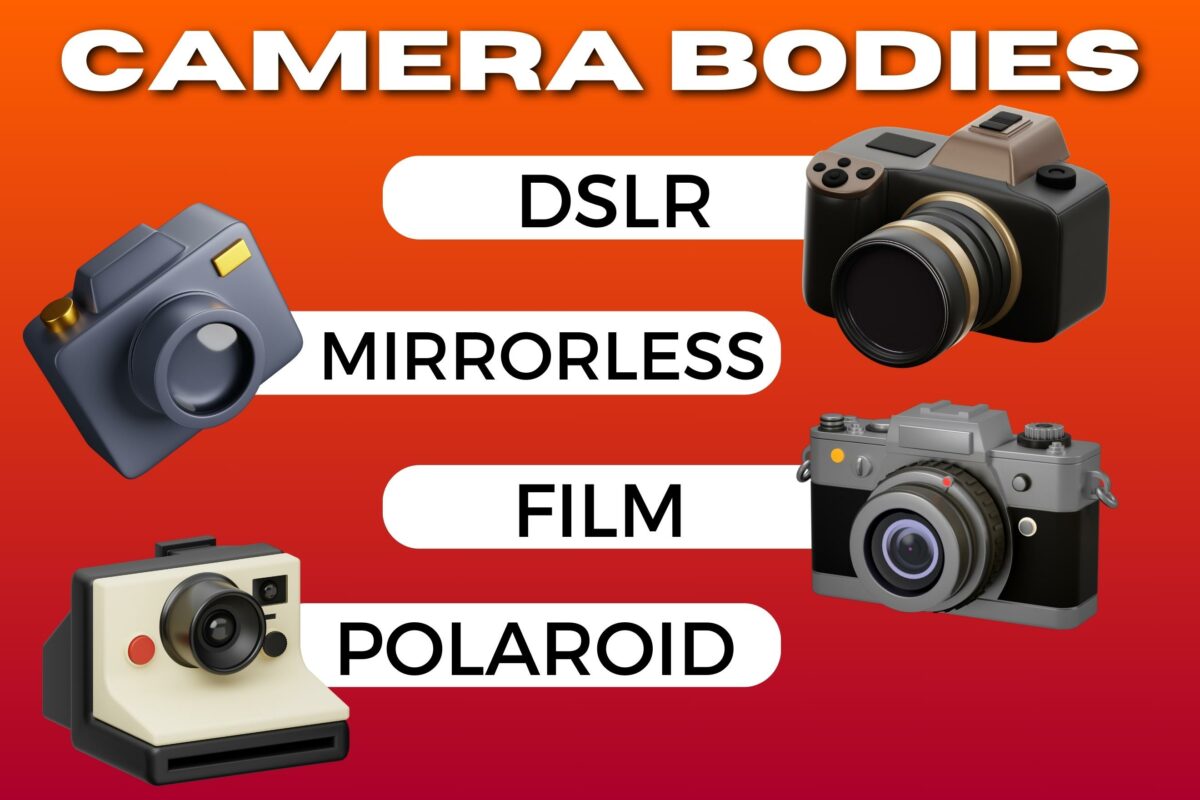
DSLR
A DSLR (Digital Single-Lens Reflex) camera is a popular choice for both beginners and professionals in photography.
These cameras offer a wide range of features and are known for their versatility. They also come with interchangeable lenses, allowing you to adapt your equipment to various situations.
When selecting a DSLR, consider your skill level and the type of photography you plan to shoot.
Beginner: Look for a camera with a user-friendly interface and automatic modes that help you learn the basics of photography.
Intermediate: Consider a camera with manual and automatic settings to help you broaden your photography skills.
Advanced: Choose a model with a high megapixel count and a wide range of advanced settings for more creative control.
Mirrorless
Mirrorless cameras’ compact size and high picture quality have made them increasingly popular.
They function without the mirror mechanism found in DSLRs, which results in a lighter and more portable camera.
Here are some features to consider when selecting a mirrorless camera:
Portability: A mirrorless model may be suitable if you prioritize a lightweight and compact camera.
Image Quality: Mirrorless cameras often feature advanced image sensors and processing engines, providing impressive photo quality in various conditions.
Lens Compatibility: Although mirrorless cameras have a more limited selection of lenses than DSLRs, the availability of adapters makes it possible to use a wide range of lenses from various brands.
Digital Cameras
Digital cameras come in various shapes and sizes, designed to cater to multiple photography needs and preferences.
Some popular types of digital cameras include:
Compact (point-and-shoot): These cameras are lightweight and small, making them portable and easy to use. They have a fixed lens, offering limited zoom and focal length capabilities.
Bridge Cameras: Falling between compact cameras and DSLRs in size, bridge cameras usually feature a fixed zoom lens with a versatile focal range. They provide a balance between ease of use and creative control.
When choosing a digital camera, select a model that meets your requirements and offers features to help you grow as a photographer.
Essential Camera Lenses for Photographers
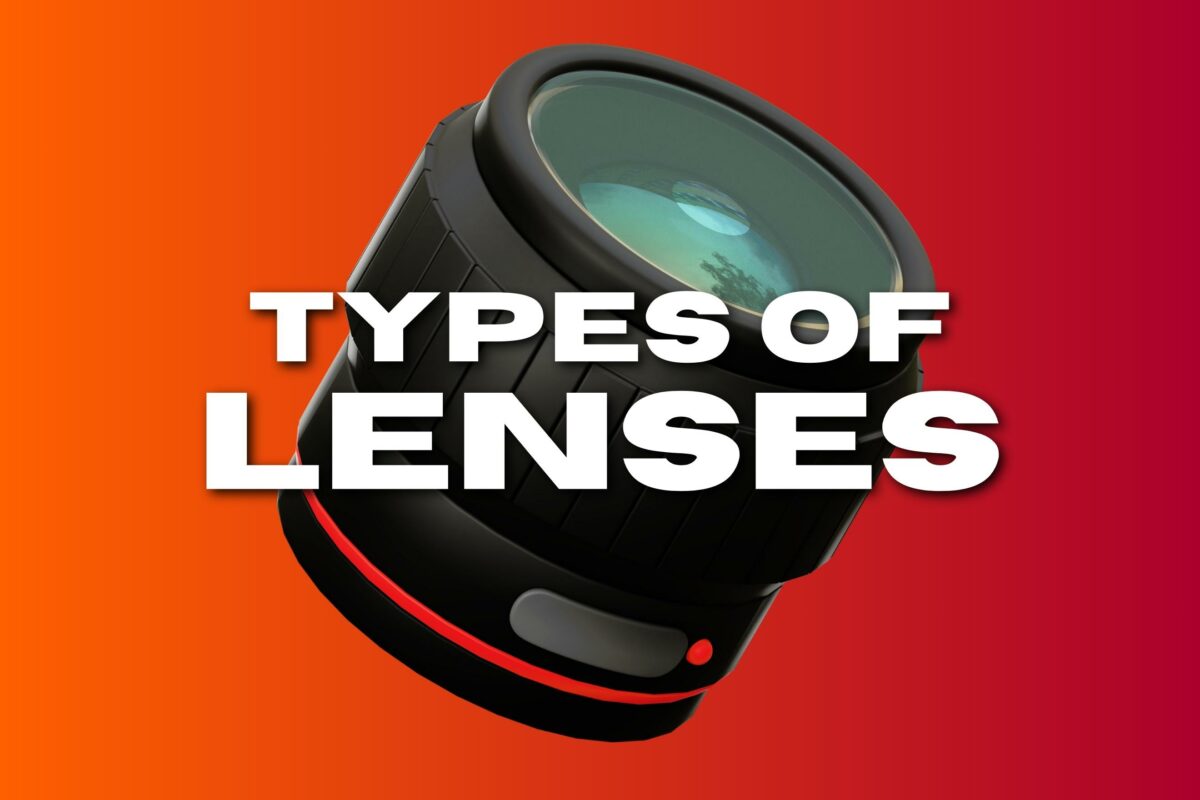
Prime Lenses
Prime lenses have a fixed focal length, so they don’t zoom in or out.
They often have a larger aperture, allowing for better low-light performance and shallower depth of field. A 35mm or 50mm prime lens is a great option if you’re looking for a high-quality and versatile lens.
These lenses produce images with a field of view similar to the human eye, making them perfect for many situations.
Telephoto Lenses
Telephoto lenses capture subjects at a distance.
They have a longer focal length, typically 70mm and higher. Telephoto lenses can be either prime or zoom, but they generally have a smaller maximum aperture than prime lenses.
These lenses are ideal for sports, wildlife, and portrait photography, as they can isolate subjects and create a blurred background, adding an artistic touch to your images.
Zoom Lenses
Zoom lenses provide the flexibility to change focal lengths without switching lenses.
A standard zoom lens, such as an 18-70mm, is an excellent starting point for any photographer. This range allows you to capture wide-angle shots at 18mm while giving you a natural field of view when shot at the longer end of the spectrum.
In addition, these lenses are widely popular and come in various sizes and quality levels.
Wide-Angle
Wide-angle lenses have a shorter focal length, usually between 10mm and 35mm. This allows for a more expansive field of view.
They’re great for capturing landscapes, architecture, and large group photos. But, because of their distortion, they may not be the best choice for still or close-up portraits.
When choosing a wide lens, consider the type of photography you’ll use it for and the level of distortion you’re willing to accept.
By understanding the differences between these types of camera lenses and their respective uses, you can make more informed decisions about which ones are worth investing in.
The Rundown on Camera Gear and Accessories
Tripods and Monopods
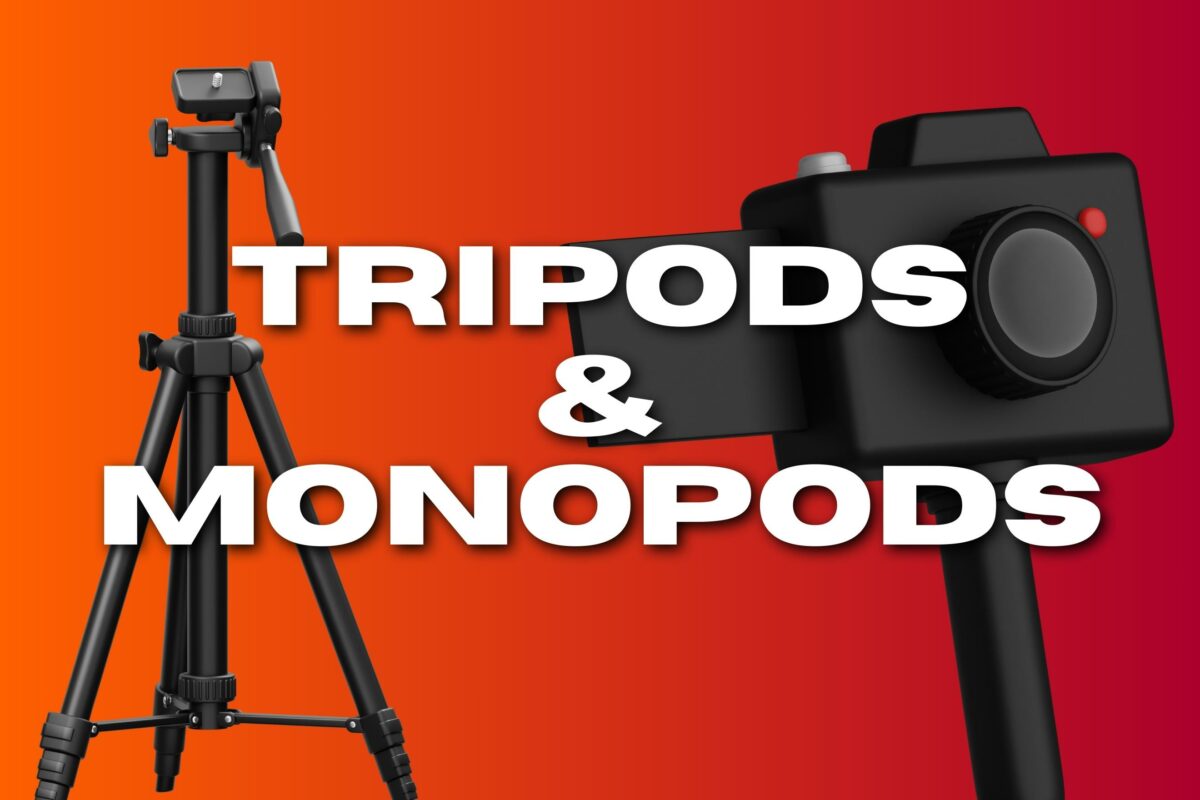
A stable support system is a must-have for capturing sharp and well-composed images.
Tripods and monopods are both popular choices amongst photographers. Tripods provide three legs for maximum stability, perfect for shooting long exposure or nighttime photography.
Monopods have a single leg and are more suited for stabilizing your camera in fast-paced situations or when space is limited.
Consider weight, maximum height, and build quality when choosing a tripod or monopod. Carbon fiber tripods are lightweight and durable, while aluminum tripods are more budget-friendly.
Look for a tripod or monopod that can support the weight of your camera body and lens.
But definitely grab yourself a tripod!
Investing in a quality tripod can be a game-changer if you want to take up your photography game. This unassuming piece of equipment often gets overlooked, but it’s necessary for capturing sharp, high-quality images.
Because, unlike our hands that naturally shake and move, tripods give you the stability you need to reduce blurriness caused by camera shake.
You’d be surprised how many professional photographers swear by their tripods. They allow slow shutter speeds and long exposure shots without compromising image clarity. Have you ever wondered how those stunning night sky or smooth waterfall photos are captured?
That’s right – with the help of a tripod!
Plus, they offer more than stability. They also promote better framing and composition. With a tripod, you can compose your shot carefully instead of rushing to snap a photograph before your arms tire.
You’ll find it easier to align elements within the frame, maintain straight horizons, and effectively follow the rule of thirds. Aside from boosting picture quality in various scenarios like macro photography or videos where steady pans are needed:
Tripods aid in shooting HDR (High Dynamic Range) images
Enable the use of slower shutter speeds in low-light conditions
Provide support for heavy lenses
Digital Camera Bags and Cases
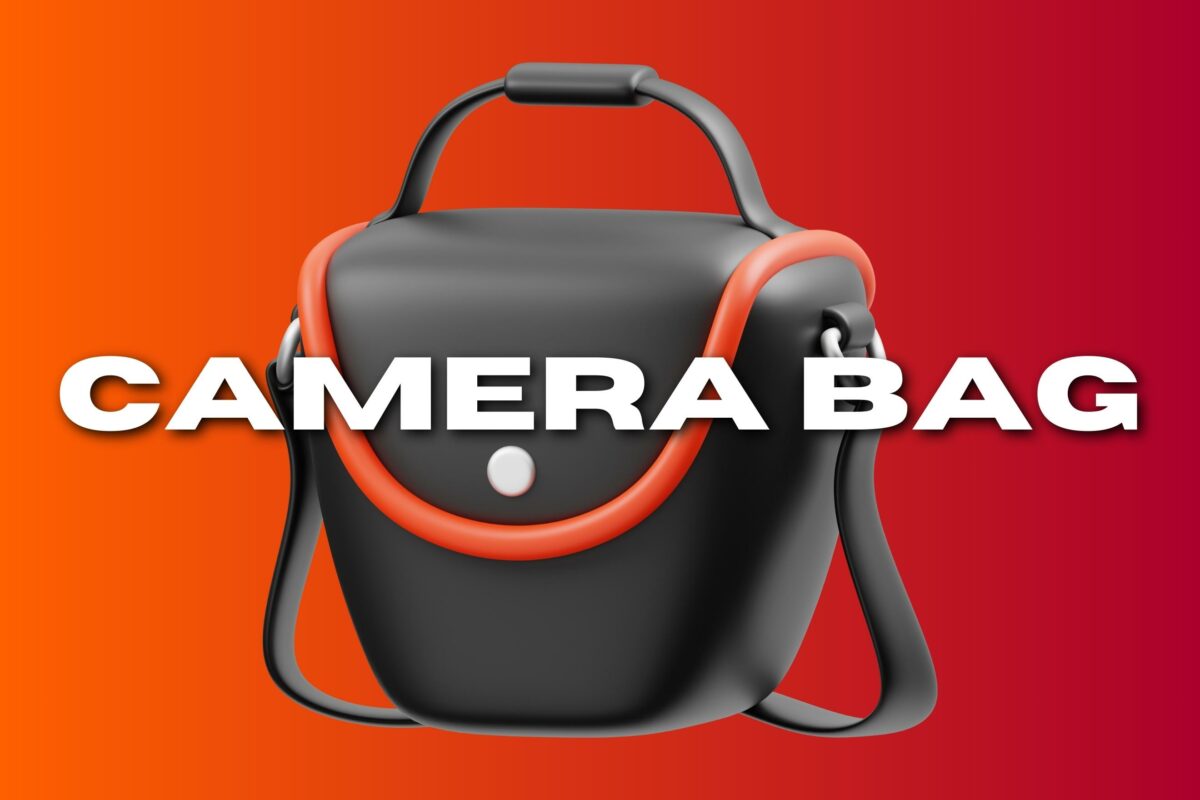
Camera bags protect your valuable photography gear during travel and storage.
Different bag styles also cater to different needs.
Backpacks offer ample space and are easy to carry during long shoots, while shoulder bags allow quick access to your gear. And travel options like Pelican cases offer military-grade protection. Ensure your bag or case is tailor-made for your camera, lens, and other accessories.
Look for a bag or case with features, customizable compartments, padded dividers, and weather-resistant materials to provide maximum protection for your equipment.
Filters
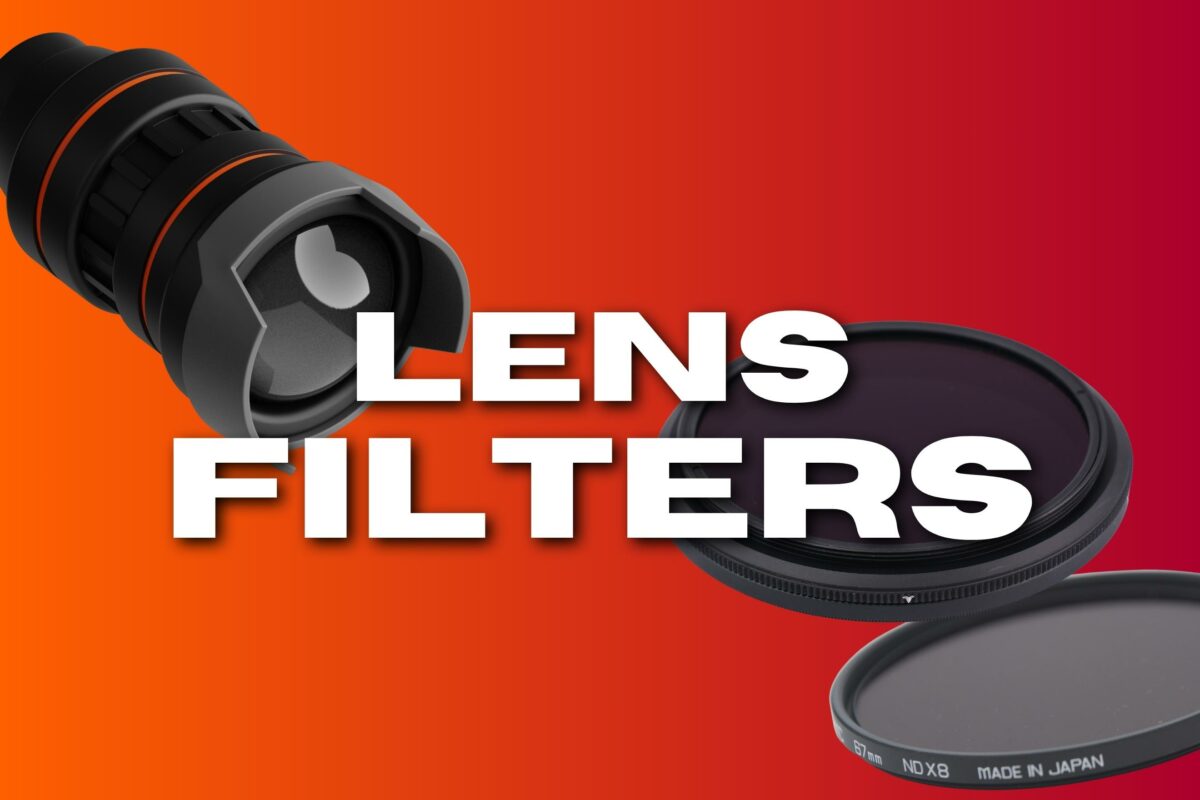
Filters are nice to have tools that enhance your images and protect your camera lens.
The most common filters include polarizing filters, which reduce glare and enhance colors; neutral density filters, which decrease light entering the lens and allow for slower shutter speeds in bright conditions; and UV filters, which protect your lens from damage.
When selecting filters, make sure they’re compatible with your camera lens’ diameter and consider investing in high-quality, multi-coated filters for better photo quality.
Memory Cards
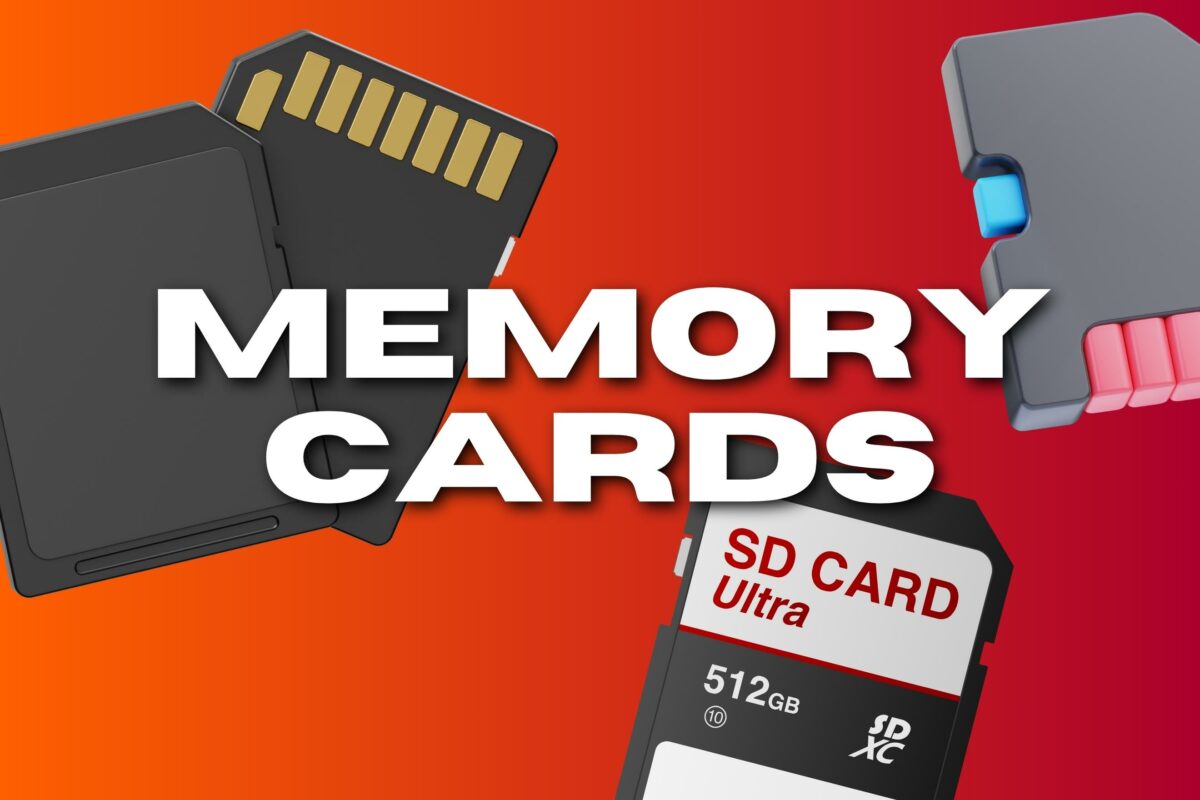
Memory cards are a required component as they store your photographs.
There are various types of memory cards like:
SD (Secure Digital)
CF (Compact Flash)
And microSD
Although SD is the most widely used.
Before you purchase a memory card, consider the capacity, speed class, and compatibility with your camera. Higher-capacity memory cards allow you to store more pictures.
While higher speed classes ensure faster read and write speeds, which are needed for shooting in burst mode or recording high-resolution video.
Batteries
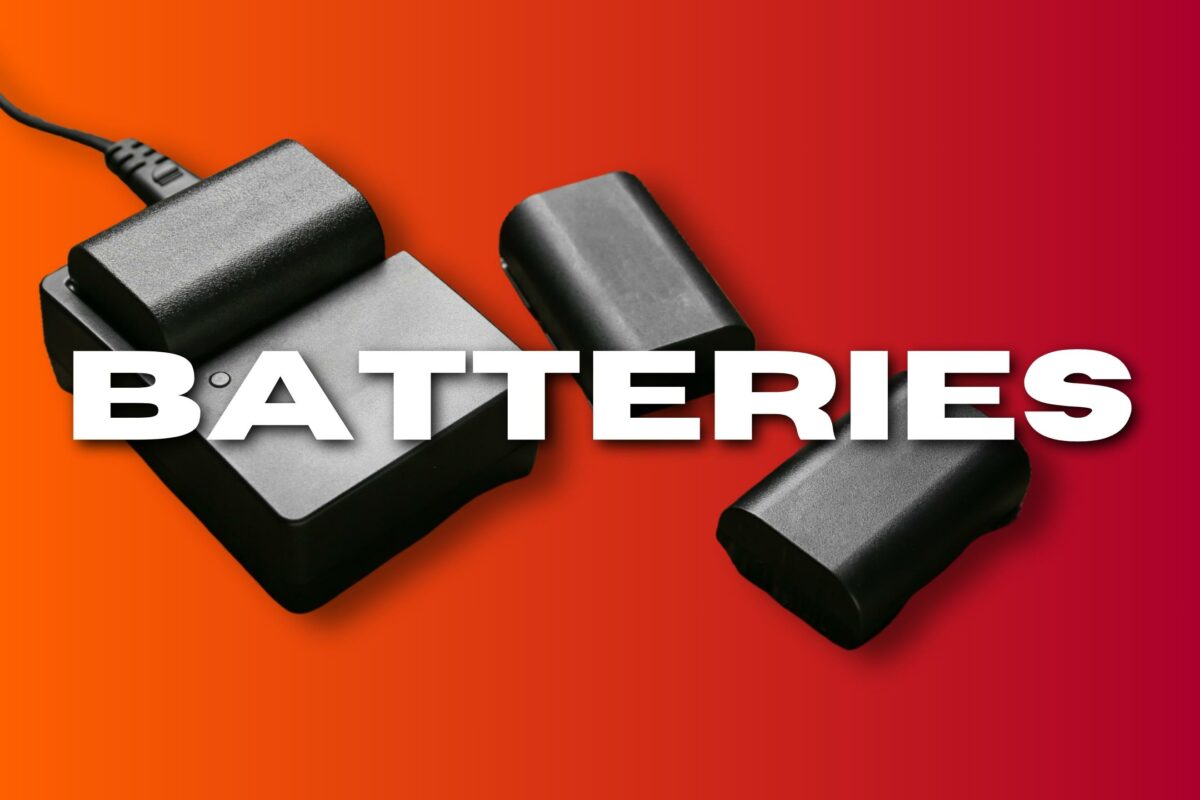
A reliable power supply is important to keep your camera running smoothly and longer during shoots.
Consider investing in spare batteries or a battery grip to extend your camera’s battery life. But remember that not all batteries are compatible with every camera model. So, double-check that you purchased the correct type for your camera.
Look for original manufacturer batteries for optimum performance, or research reputable third-party brands that offer compatible options.
But I highly recommend you always carry extra batteries, especially while shooting outdoors or in locations with limited access to charging facilities.
I can’t tell you how many times I had batteries die on me during shoots.
Selecting Equipment for Different Types of Photography
Portrait
In portrait photography, you want a camera with a high-resolution sensor and low-light capabilities. Full-frame cameras are popular among portrait photographers, but crop-sensor cameras can also be a great option for those on a budget.
Besides the camera, the lens you choose can significantly impact the quality of your portraits. A prime lens with a wide aperture, such as a 50mm f/1.8 or 85mm f/1.8, is popular for portrait photographers.
These lenses allow for a shallow depth of field, which can help to isolate your subject and create a beautiful bokeh effect in the background. And the longer focal length can help flatter your subject’s features and create a more natural-looking image.
Other equipment to consider when shooting portraits includes lighting and accessories such as reflectors and diffusers. A good lighting setup can help to create a flattering and well-lit portrait, while reflectors and diffusers can help to control the light and create a more even, natural-looking result.
Landscape
For landscape photography, invest in a wide-angle lens to capture large landscapes.
A lens with a focal length between 10-24mm is ideal for this type of photography. A sturdy tripod is necessary for capturing sharp images and long exposures, such as waterfalls or sunsets.
Consider using a graduated neutral-density (GND) filter to balance the exposure when the sky is bright, and the foreground is dark.
Sports
Sports photography requires quick reactions and the ability to freeze fast-moving action.
For this purpose, you need a telephoto lens in the 70-200mm range, which allows you to zoom in on the action from a distance. A fast shutter speed also helps, so a camera with a higher continuous shooting speed is recommended.
Consider using a monopod to provide support without sacrificing mobility.
Street
Street photography is all about capturing candid moments and scenes.
Grab yourself a prime lens with a focal length of 35mm or 50mm, which is great for this genre. These lenses provide clarity and depth of field, creating intimate and engaging images.
Opt for a compact, lightweight camera that’s easy to maneuver in crowded places. A silent shutter mode is useful for discreetly taking pictures without drawing attention.
Travel
Travel photography combines different genres, so having a versatile lineup of equipment is essential.
A standard zoom lens with a 24-70mm focal length is an excellent choice for capturing subjects. A lightweight tripod is useful, especially for low-light situations.
Pack extra batteries and memory cards so you don’t miss any opportunities to capture photos.
Wildlife
Capturing pictures of nature and animals in their natural habitat requires patience and the right equipment. A super-telephoto lens in the 300-600mm range is needed to photograph subjects from a safe distance without disturbing them.
Choose a camera with a fast autofocus system to keep moving subjects in sharp focus. A weather-sealed camera is also beneficial for protecting your equipment in unpredictable outdoor conditions.
Photo Processing Equipment
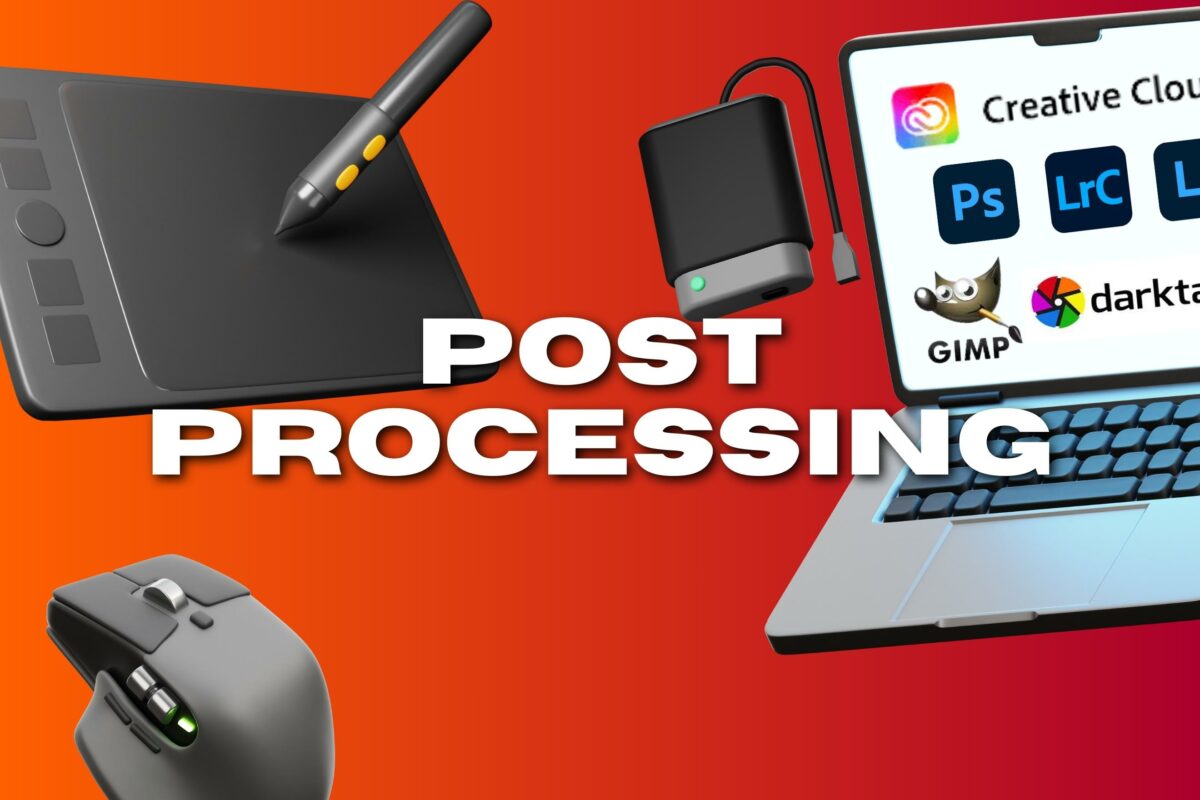
Computers and The Role of a High-Performance Computer in Photo-Editing
For photo processing, having a reliable computer is mandatory as well.
A powerful computer with a high-resolution display will guarantee you can efficiently edit your photos without lag or delays. Look for a computer with a fast processor, ample RAM, and a dedicated graphics card to handle your editing needs.
Some popular options among photographers are Apple’s iMac, MacBook Pro, Mac Studio, Microsoft Surface Studio, and the Lenovo ThinkCentre M900.
And remember that being equipped with a potent computer allows your editing software to execute at its full potential, turning your photographic vision into reality.
Editing Software to Improve Image Quality
Various editing software is available to help you transform your raw photography into polished images.
Adobe Lightroom and Photoshop are two widely used programs that offer advanced editing tools, including exposure adjustments, color correction, and retouching capabilities.
Adobe Lightroom is a potent yet user-friendly tool. It assists with image management and basic adjustments like exposure, color grading, and cropping.
Photoshop takes granular control to a new level. Tasks like advanced retouching, composite images, and adding text become possible with Photoshop, making it a worthy upgrade.
But if you’re low on cash, free alternatives, such as GIMP and Darktable, provide essential editing features.
When selecting your editing software, consider your budget, skill level, and the specific tools required for your photography projects.
External Hard Drives
Storing your photographs safely and securely means you can sleep worry-free at night. You never want to risk losing your work because of hardware failure or accidental deletion.
So, investing in an external hard drive is an excellent way to protect your digital images while providing additional storage space. Look for hard drives with fast transfer speeds, significantly reducing the time required to back up your work.
This durable SSD is lightning-fast and offers high-speed data access. Great for photographers, videographers, and digital creators.
Also, consider getting multiple hard drives to create redundant backups, further safeguarding your photographs. I recommend securely storing a backup of all your photos online in the “Cloud.”
There are a few different options for cloud photo storage:
Adobe Creative Cloud
Dropbox
SmugMug
Google Photos
Amazon Prime Photos
iCloud
PhotoShelter
As you invest in your photo processing equipment, remember your computer, editing software, external hard drives, and cloud storage are all essential components for preserving your work.
So focus on obtaining reliable technology and high-performance tools you love that meet your specific needs and preferences as a photographer.
Photography Equipment for Beginners
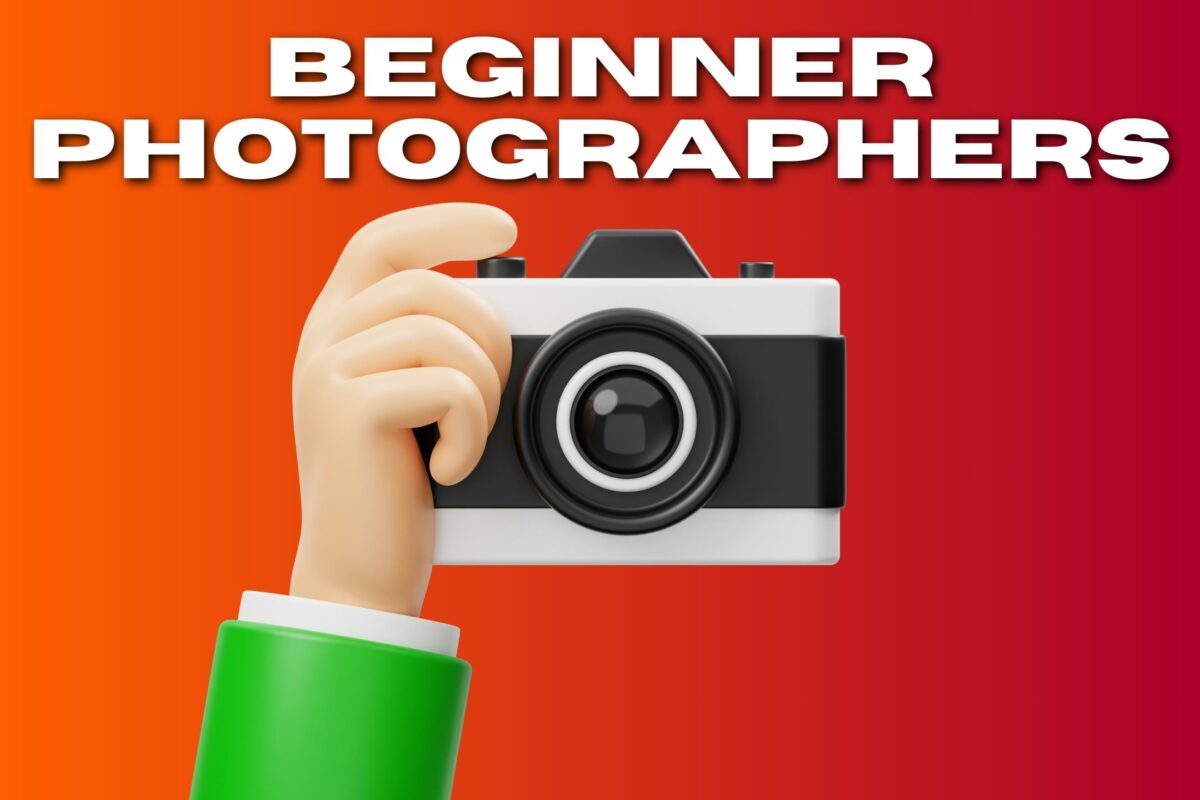
Camera Body
As a beginner photographer, you need a suitable camera.
And you have two main options: a DSLR or a mirrorless camera.
Both types offer great results, but they function differently.
DSLRs have an internal mirror that directs light into an optical viewfinder, allowing you to see exactly what the lens sees. And mirrorless cameras don’t have this interior mirror, which makes them lighter and more compact.
When selecting a camera, consider your budget, the type of photography you’re interested in, and the level of control you want over your camera settings.
Look for models with easy-to-use controls and good photo quality at the entry level. Some popular options for beginners include Canon’s Rebel series (such as the Canon Rebel T7) and Nikon’s D3000 series (like the Nikon D3500).
Lenses
Your camera will most likely come with a kit lens.
This is typically a versatile and affordable lens that can help you get started with photography. Kit lenses usually have a variable focal length (such as 18-55mm) and are suitable for general-purpose photography.
But, if you can afford it, think about investing in additional lenses to expand your photography and creative possibilities.
Prime lenses are also a great option for beginners because they have a fixed focal length and often provide superior photo quality compared to kit lenses.
Using a prime lens encourages you to think more about your composition and focus on the subject in your frame. Some popular prime lenses for beginners include the 50mm f/1.8 (known as the “nifty fifty”) and the 35mm f/1.8.
If you’re a landscape photographer, you might require a wide-angle lens, while portrait photographers benefit from a fast prime lens with a focal length between 85-135mm.
As a Beginner, You Don’t Need Expensive Photography Equipment
Photography can be an expensive hobby, but it doesn’t have to break the bank.
By focusing on essential equipment and investing wisely, you’ll build a toolkit that serves your creativity without emptying your wallet. And as you advance, remember – it’s not about the equipment in your bag but how well you use it!
For budget-friendly alternatives, the Canon EOS Rebel SL2 is great for beginners. It’s a DSLR with a 24.2-megapixel sensor equipped with an optical viewfinder. Another alternative is the Sony ZV-E10, a vlogging camera that is also good for photos.
If you’re looking for a budget recommendation for beginner photographers, start with a $500 camera. The Nikon D7000 is good, and it can be paired with a Sigma 18-35mm f/1.8 lens or both the Nikon 35mm f/1.8 DX and the Sigma 17-50mm f/2.8 OS lenses.
It’s also important to have memory cards with a minimum capacity of 32GB and a fast read-write speed.
Expanding Your Hobby – Advanced Photography Tools for Professionals
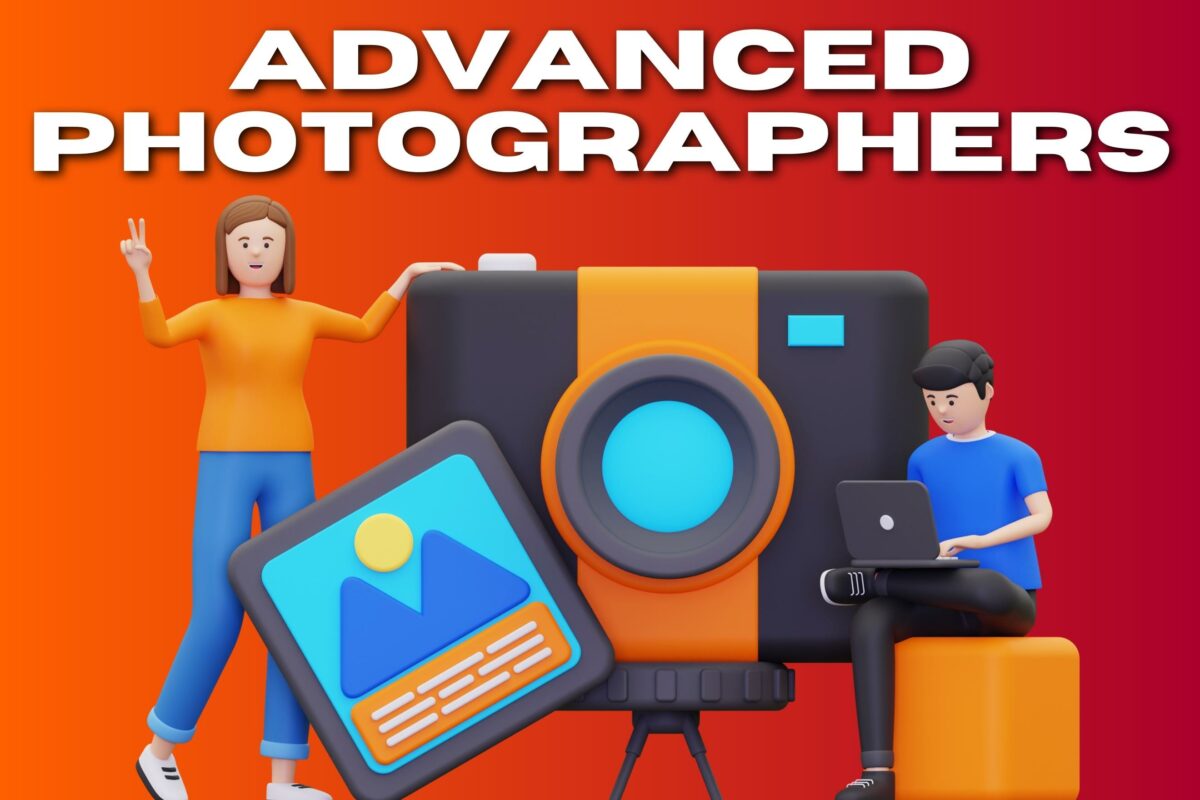
Ok, you’re no longer a beginner and ready to take things to another level. Let’s talk about how to do just that.
Drones
Drones offer a unique perspective in photography that was once limited to aerial shots taken from expensive helicopter rides.
As a photographer, you can experiment with drone photography to add diversity to your portfolio. Drones now have built-in cameras, making it easier for hobbyists and professionals to explore aerial photography.
This compact yet powerful drone offers stunning 4K video capabilities, exceptional flight stability, and extended battery life, perfect for taking overhead photos.
Start with cheaper options and upgrade as you become more proficient in flying and capturing images.
Lighting
Understanding and mastering lighting can greatly improve your photography.
This kit is designed for beginners and offers straightforward setup and use, along with powerful, adjustable lighting.
Invest in a budget-friendly external flash or simple light kit to enhance indoor and low-light photography. Portable LED panels are another excellent option for your on-the-go lighting needs.
For advanced lighting equipment, look no further than the Profoto B10 Plus, Godox AD600Pro Witstro All-In-One Outdoor Flash, and Neewer Vision5 400W TTL.
Reflectors
Reflectors help control and shape light in photography.
You can find affordable reflectors in various shapes and sizes, such as circular or rectangular ones. They also come in a few colors, each with a specific purpose.
For example:
White: Provides a gentle, neutral fill light
Silver: Increases contrast and highlights
Gold: Warms up skin tones and adds a glow
Black: Absorbs light and deepens shadows
This reflector is super handy and all you need. It's also heavy-duty and works well in many different lighting conditions.
Use these reflectors as needed to manipulate natural light outdoors for portrait photography and weddings effectively.
Equipment Needed to Start a Successful Photography Business
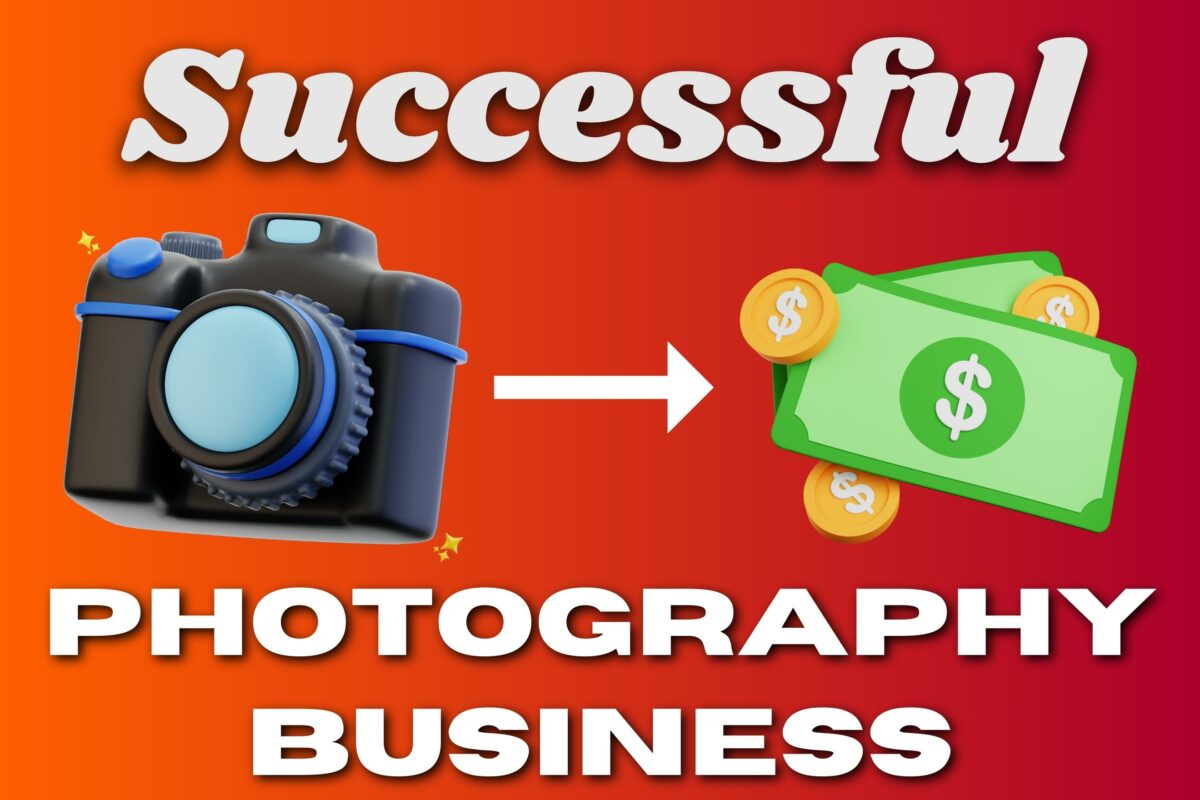
Starting a photography business can be an exciting and rewarding venture.
However, it requires a significant investment in equipment to get started. If you’re starting from scratch with no experience, you’ll need to acquire a few key pieces of equipment to get your business off the ground.
First and foremost, you’ll need a high-quality camera and lens.
A full-frame camera with a high-resolution sensor and fast autofocus is a popular choice among professional photographers. Also, a fast prime lens with a wide aperture, such as a 50mm f/1.8 or 85mm f/1.8, is a must-have for events and portraits.
Besides the camera and lens, you’ll also need lighting equipment. Things like strobes or speed lights ensure you can create well-lit images in any environment.
A good lighting setup also helps create a professional look and feel to your images and sets you apart from other photographers in your area.
But, it takes more than just equipment to succeed in photography.
You need hard work, dedication, and a willingness to learn and improve your skills continuously.
You’ll also want to:
Build a strong portfolio
Develop a unique style
Network with other photographers and potential clients
Have a solid business plan in place
Understand pricing
Learn sales and marketing
Research your insurance options and get legal protection
These are all key factors you’ll want to consider when building a successful photography business.
Maintenance Tips for Your Photography Equipment
Your precious photography equipment deserves the best care. But how do you maintain it to ensure it lasts? Let’s dive into some tips.
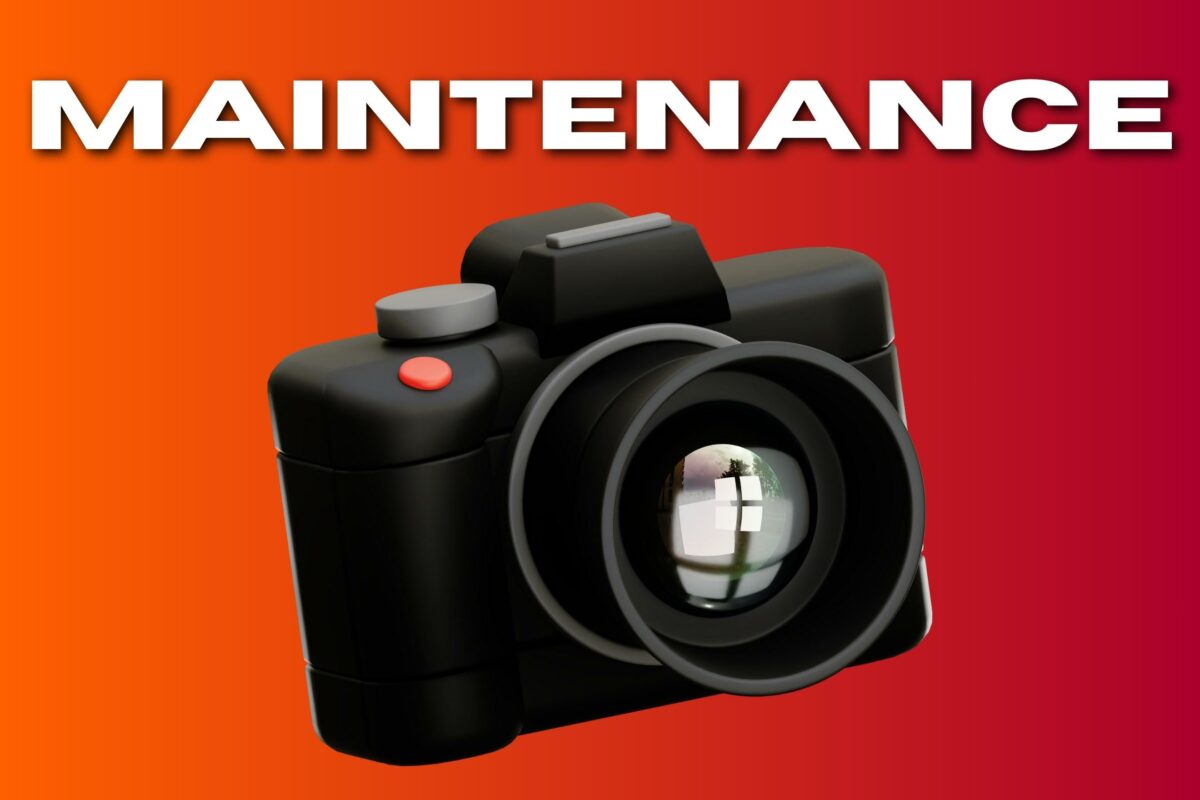
First off, keep your gear clean. Dust and grime can build up over time, damaging delicate parts of your camera.
So, regularly wipe down your camera body with a dry cloth and use a specialized lens cleaner for your lenses. And don’t forget about cleaning the sensor. But remember, it’s incredibly sensitive—so consider professional cleaning.
Next on the list is proper storage. Avoid leaving your equipment in damp or extreme temperatures, which can harm electronics and optics in cameras and lenses. Instead, store them in padded bags away from moisture and heat sources.
Handling equipment properly is also paramount.
Always grip cameras firmly, ensuring straps are secure before hanging around the neck or shoulder. When you’re changing lenses, be quick to minimize dust entering the camera. And finally, regular servicing goes a long way to prolonging your gear’s lifespan.
Experts recommend getting professional maintenance once every year or two, depending on usage levels.
Photography Safety Tips for Drones
When it comes to photography equipment, you want to focus on capturing quality shots and prioritize safety. And in recent years, drones have become an increasingly popular tool for photographers to capture aerial photographs.
But, drones can pose a safety risk if used improperly.
As a photographer, you must educate yourself on the local laws and regulations surrounding drone use and follow them closely. This includes registering your drone with the appropriate local authorities and ensuring you’re in a safe and legal manner.
Another important aspect of drone safety is always being aware of your surroundings when flying. This includes avoiding crowded areas or areas with restricted airspace and being mindful of other people or objects in the area.
Keep your drone in sight and avoid flying it too high or far away.
Be Mindful of Updates and Technological Camera Advancements
Photography is constantly evolving.
From the latest camera models to new lenses and accessories, there’s always something new to explore in photography.
So, as a photographer, staying up-to-date with the latest advancements is important to make the most of your equipment and capture the best possible shots.
The equipment you purchase today might not be the best option in a few years. So, regularly check for updates and new models and read the latest reviews and recommendations before purchasing.
When you stay up-to-date with the latest advancements, you can always use the best equipment to capture your images.
Photography Equipment – The Takeaway
Your photography equipment is undoubtedly important in photographing great images. But remember, the photographer’s vision, creativity, and technique matter most.
Investing in high-quality equipment can help improve the quality of your images, but your artistic vision and passion for the craft make your shots stand out.
The equipment you use is just a tool in your repertoire, and the art of photography is about much more than just technical specs and gear. It’s about capturing moments, telling stories, and expressing your unique perspective.
So, while it’s worth investing in good equipment and staying up-to-date with tech, it’s equally important to remember the art and passion behind every shot.
Frequently Asked Questions
What essential gear do beginner photographers need?
As a beginner photographer, you need some essential gear, including a camera (DSLR or mirrorless), a versatile lens like a 24-70mm f/2.8, a good tripod for stability, and a camera bag for storage and protection. Also, invest in extra batteries, memory cards, and a cleaning kit to maintain your equipment.
What accessories are recommended for photographers?
Some recommended accessories for photographers include:
A flash, light kit, or speedlight for improved lighting.
Polarizing filters, UV, or ND filters, depending on your shooting goals.
A remote shutter release to avoid camera shake during long exposures.
A comfortable camera strap or harness.
A reflector or diffuser for better control of external lighting.
Which photography equipment brands are most trusted?
Some of the most trusted photography equipment brands include:
Canon
Nikon
Sony
Fujifilm
Olympus
Panasonic
Pentax
These brands offer reliable and quality products, but research and compare different models when selecting your gear.
Where can I purchase affordable photography equipment?
You can find affordable photography and video equipment at online retailers like Amazon, B&H Photo, Adorama, and eBay. Local camera stores might also have competitive prices and offer personalized purchase recommendations. Always consider buying used or refurbished gear, which can save you lots of money without sacrificing quality.
How do I select the right equipment for my photography needs?
To select the right equipment for your photography needs, determine your primary subjects and goals. Consider your budget and desired features, such as resolution, low-light capability, and autofocus speed. Then research and compare potential options, read reviews, and ask other photographers for advice.
What advanced equipment do professional photographers use?
Professional photographers use advanced equipment such as:
Full-frame DSLR or mirrorless cameras with high-resolution sensors.
A range of high-quality lenses includes prime, telephoto, and macro lenses.
External lighting systems, like strobes or continuous lights.
Softboxes, umbrellas, or beauty dishes for light modification.
Advanced editing software like Adobe Photoshop or Lightroom.
The specific brand of equipment used varies based on the photographer’s niche and preferred shooting style.
How many megapixels do I need?
Megapixels mainly matter if you print large images or need impeccable detailing. A range of 12-24 Megapixels is more than enough for most photography, particularly when shared on digital platforms. But when making your final decision at checkout, remember that a higher megapixel count doesn’t automatically mean superior photo quality. Things like the camera’s sensor size and the lens quality are often more impactful.
